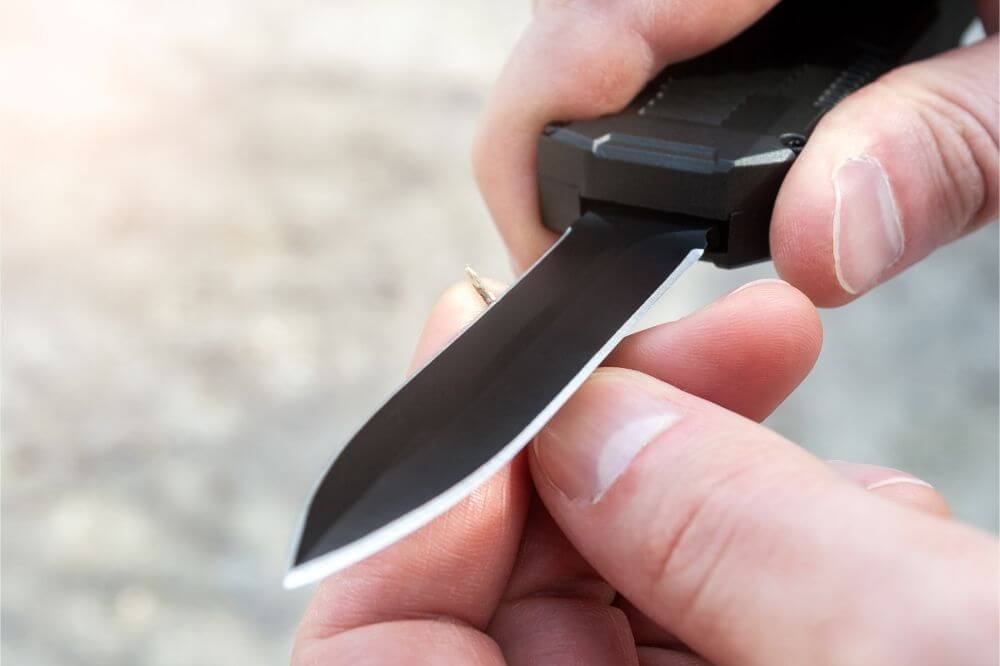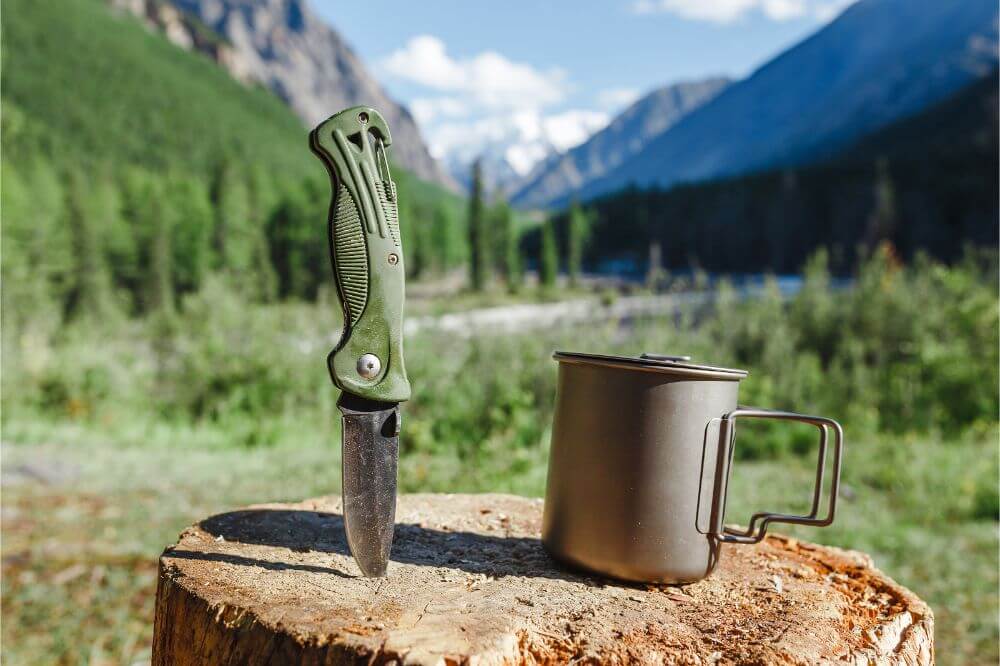There is no doubt that being outdoors can be relaxing, and it can help you get in touch with your more spiritual side. However, with that said, being out in the woods is not all fun and games, at least not all of the time.
Sometimes, survival scenarios may occur where you need the proper knowledge and tools to stay alive. In this case, a good knife is one of your most valuable tools. Even if we aren’t talking about survival scenarios, for basic hunting, fishing, and camping, a good knife always comes in handy.
There are different types of knives, and two of the most popular are survival knives and bushcraft knives. While they may seem similar, they are, in fact, quite different. We will look at survival knife vs. bushcraft knife to help you determine which is best for you.
Survival Knives
First is the survival knife, a particular type of knife that can be used for various applications.
Generally speaking, you can expect survival knives to be on the larger and tougher side. This is because they are often used for heavy-duty tasks such as chopping and splitting wood, striking flint, skinning and gutting animals, building shelters, prying things apart, and other such jobs.
When it comes down to it, if you had to choose a true multi-purpose knife that could be used for many jobs, you want to go with the survival knife. So now that you know the basics let’s look at some of the defining characteristics of survival knives.
The blades of survival knives can vary significantly in size, but they tend to be larger. These knives are usually anywhere up to a foot in length or longer. In terms of width, expect them to be between 1/8 and 1/4 inches.
Survival knives tend to be made out of carbon or stainless steel, with carbon steel being more durable and easier to sharpen; however, stainless steel doesn’t rust as easily.
Every good survival knife needs a full-tang blade to allow for maximum durability and functionality.
Most survival knives are either totally straight edge or semi-serrated. Usually, the front half or two-thirds will be flat, and the rear serrated; some blades may be fully serrated. What you get really depends on the intended application.
The other thing is the handle, which could be a single piece or two pieces on either side of the tang. The handle material can be anything from micarta or glass-filled nylon to wood or rubber. These materials should provide excellent grip and moisture resistance.

Bushcraft Knives
On the other hand, bushcraft knives are a particular type of knife used in the wilderness for relatively small and tasks, unlike survival knives which are designed more for heavier and more challenging jobs.
The main difference between the two is that bushcraft knives tend to be much smaller, making them ideal for jobs that require a good deal of precision and accuracy.
Jobs a bushcraft knife can do include skinning small animals, starting a fire, making animal traps, trimming rope, and carving wood. Now, let’s take a closer look at their defining features.
Bushcraft knives are usually small, no longer than 5” long, and generally no thicker than 1/8”. These knives are small, somewhat flexible, and designed for precision.
A good bushcraft knife should also have a full-tang blade made of stainless or carbon steel.
You can expect a bushcraft knife to have a flat or Scandinavian grind blade shape. In addition, these knives usually are not serrated.
The handle materials on both of these knives are usually the same.
The Main Differences
The difference between bushcraft and survival knives is the size, with survival knives being two to three times longer and thicker. Therefore, based on this, you can assume that they are not designed for the same tasks. One knife is about power and versatility, whereas the other is about precision and accuracy.
Conclusion
Now you know the similarities and differences between bushcraft and survival knives. If you want to perform the most jobs possible, you should have at least one of each in your arsenal.

